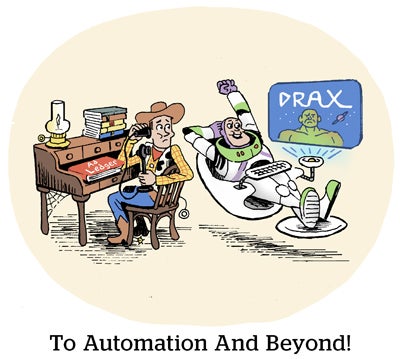The Mouse House is moving ahead with plans to automate as much of its ad sales biz as possible. Next up: self-serve programmatic.
On Wednesday, Disney announced the addition of its first-party audience graph to Disney Campaign Manager, which it rebranded from Hulu Ad Manager at the beginning of the year.
The purpose of the rebrand was to highlight that Disney’s self-serve platform will include streaming inventory beyond Hulu as of next year, including Disney+ and ESPN+. (For now, though, only Hulu is available on a self-serve basis.)
Although Disney wants to expand demand in general, it especially hopes to attract more local TV advertisers to streaming with the offer of better targeting than they can get on linear, including geotargeting, said Jennifer Donohue, SVP of local sales.
Location-based targeting isn’t always the most accurate on linear, as evidenced when voters receive ads for issues or candidates they can’t even vote on.
Since Disney Campaign Manager opened up self-serve access earlier this year, roughly 800 agencies that hadn’t worked with Disney before have joined the platform, a quarter of which represent hyperlocal advertisers. The rest are agencies that primarily focus on search and social, but are starting to move some of those budgets into CTV.
According to Disney, the number of local ad buyers it works with increased by 50%, thanks in large part to its self-service offering.
Getting started
One reason self-service is attractive to buyers is because it lowers the barrier to entry, said Gogi Gupta, CEO of performance marketing agency Gupta Media, one of the agencies now using Disney’s campaign manager.
The platform makes Hulu inventory more accessible to a wider range of clients, Gupta said, and “the ability to manage campaigns ourselves gives us quicker turnaround times [for reporting] and more flexibility to test creative options.”
Advertisers using Disney Campaign Manager can upload their ad creative and set campaign parameters such as budget, impression goals and flight time.
Buyers can do targeting based on ZIP codes or district market areas (DMAs), content genre, age/gender demos and interest-based segments, such as viewers who frequent fast-food joints, drink coffee or are in the market for a new car.
Agencies can build audience targets on Disney Campaign Manager using LiveRamp’s Data Marketplace, which provides access to third-party data sets. And, as of this week, buyers can also match that data with Disney’s first-party data.
“We [had] to make sure we aren’t relying solely on third-party segments,” said Jamie Power, Disney’s SVP of addressable sales. First-party data is the necessary next step to “provide as much reach against [target] audiences and local markets as possible,” Power said.
The ad buying itself happens directly through Disney’s ad server, not through the supply-side platforms Disney uses for some of its other programmatic buys, such as Magnite.
Think of Disney Campaign Manager as an automated insertion order, but with more control and more reporting transparency, Donohue said.
Campaign measurement on the platform other than basic reach and frequency counts comes from Innovid, an outcomes-based measurement provider that attributes web traffic, brand lift and app downloads.
Shop local
Targeting and outcomes are what TV ad buyers look for when they consider adding CTV to their media plans.
Buyers accustomed to reaching hyperlocal markets with linear addressable have been particularly slow to try out streaming. On top of addressable TV’s scale problem, CTV measurement standards are still sorely lacking.
Still, “local media companies know it’s very hard to create [necessary] scale” for TV buys, Donohue said. But promises of better targeting and wider scale are getting them to reconsider their stance on streaming.
In addition to adding its audience graph to the platform this week, earlier this year, Disney added the ability for local buyers to negotiate rates, in addition to expanding DMA-based geotargeting options. The company says it now reaches more than half of the US population in 176 out of 210 DMAs in the country.
“Whatever we serve a client nationally, we’re going to do locally,” Donohue said, “whether they transact with us directly or through automation.”
According to Donohue, demand should continue to grow when Disney makes Disney+ and ESPN+ inventory available on its self-service campaign manager next year.














